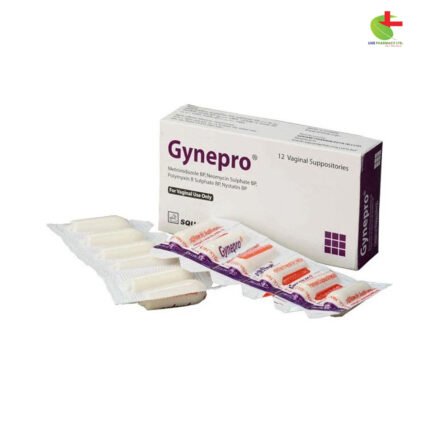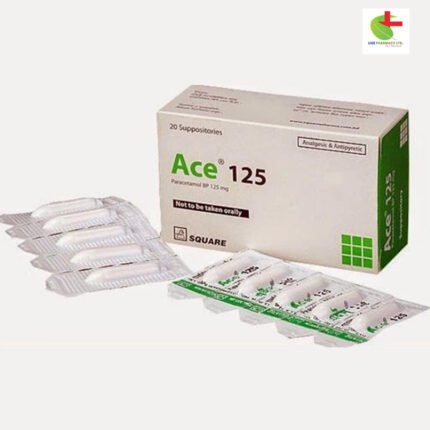Xfin 250
280.00৳ Strip
- Discover a comprehensive range of Terbinafine-based products under the Xfin brand, tailored to treat diverse fungal infections effectively.
- Xfin tablets combat onychomycosis of toenails and fingernails caused by dermatophytes.
- Xfin granules are formulated for Tinea Capitis treatment.
- Xfin cream targets fungal skin infections from Trichophyton and Candida species.
- Each product is designed with detailed dosage guidelines and precautions for safe and effective use.
 Brand
Brand
|
Square Pharmaceuticals PLC |
|---|---|
 Generics
Generics
|
Terbinafine Hydrochloride |
 Type
Type
|
Tablet |
Indications
Xfin Tablet: This tablet treats onychomycosis of toenails or fingernails caused by dermatophytes (tinea unguium).
Xfin Granules: Indicated for treating Tinea Capitis.
Xfin Cream: Effective against fungal skin infections caused by Trichophyton (e.g., T. rubrum, T. mentagrophytes, T. verrucosum, T. violaceum), Microsporum canis, Epidermophyton floccosum, and yeast infections like those caused by Candida (e.g., C. albicans). Also treats pityriasis (tinea) versicolor due to Pityrosporum orbiculare (Malassezia furfur).
Xfin 1% Spray: Treats tinea infections of the skin and pityriasis (tinea) versicolor due to Malassezia furfur.
Pharmacology
Terbinafine, an Allylamine antifungal, inhibits the biosynthesis of Ergosterol, a crucial component of fungal cell membranes, by blocking the Squalene Epoxidase enzyme. This action leads to fungal cell death by increasing membrane permeability, primarily through Squalene accumulation rather than Ergosterol deficiency. Terbinafine has demonstrated efficacy against various microorganisms such as Tricophyton Mentagrophyte and Trichophyton Rubrum in both laboratory tests and clinical settings.
Dosage & Administration
Terbinafine Tablet: For fingernail onychomycosis, take 250 mg (one tablet) daily for 6 weeks. For toenail onychomycosis, take 250 mg (one tablet) daily for 12 weeks. Optimal clinical results are visible several months after treatment ends, correlating with the time required for healthy nail regrowth.
Terbinafine Granules: Dosage varies by body weight, ranging from 125 mg to 250 mg daily for up to 6 weeks, depending on weight category.
Terbinafine Cream: Apply once or twice daily to cleansed, dry affected areas. Duration of treatment varies: 1 to 2 weeks for tinea corporis and cruris, 1 week for tinea pedis, 2 weeks for cutaneous candidiasis and pityriasis versicolor.
Terbinafine 1% Spray: Apply once or twice daily as directed, ensuring affected areas are thoroughly cleansed and dried beforehand.
Interaction
Terbinafine inhibits the CYP450 2D6 isozyme, affecting drugs metabolized primarily by this pathway. Caution and monitoring are advised when co-administering with drugs such as tricyclic antidepressants, selective serotonin reuptake inhibitors, beta-blockers, and certain antiarrhythmics.
Contraindications
Avoid terbinafine tablet and cream in individuals hypersensitive to terbinafine.
Side Effects
Common adverse events include gastrointestinal symptoms, liver test abnormalities, rashes, urticaria, pruritus, and taste disturbances. Serious reactions like idiosyncratic hepatic injury, severe skin reactions, and allergic reactions may occur rarely.
Pregnancy & Lactation
Avoid terbinafine tablet during pregnancy and breastfeeding due to limited clinical data. Terbinafine cream should only be used if benefits outweigh risks.
Precautions & Warnings
Terbinafine tablets may cause rare instances of severe liver injury; discontinue if signs of liver damage appear. Avoid contact with eyes when using terbinafine cream.
Use in Special Populations
Safety and efficacy of terbinafine in pediatric patients and elderly individuals have not been fully established.
Overdose Effects
Limited clinical data on terbinafine overdose suggest symptoms like nausea, vomiting, abdominal pain, and dizziness.
Therapeutic Class
Antifungal preparations, both oral and topical.
Storage Conditions
Store terbinafine products in a cool, dry place below 30°C, protected from light.













Reviews
There are no reviews yet.